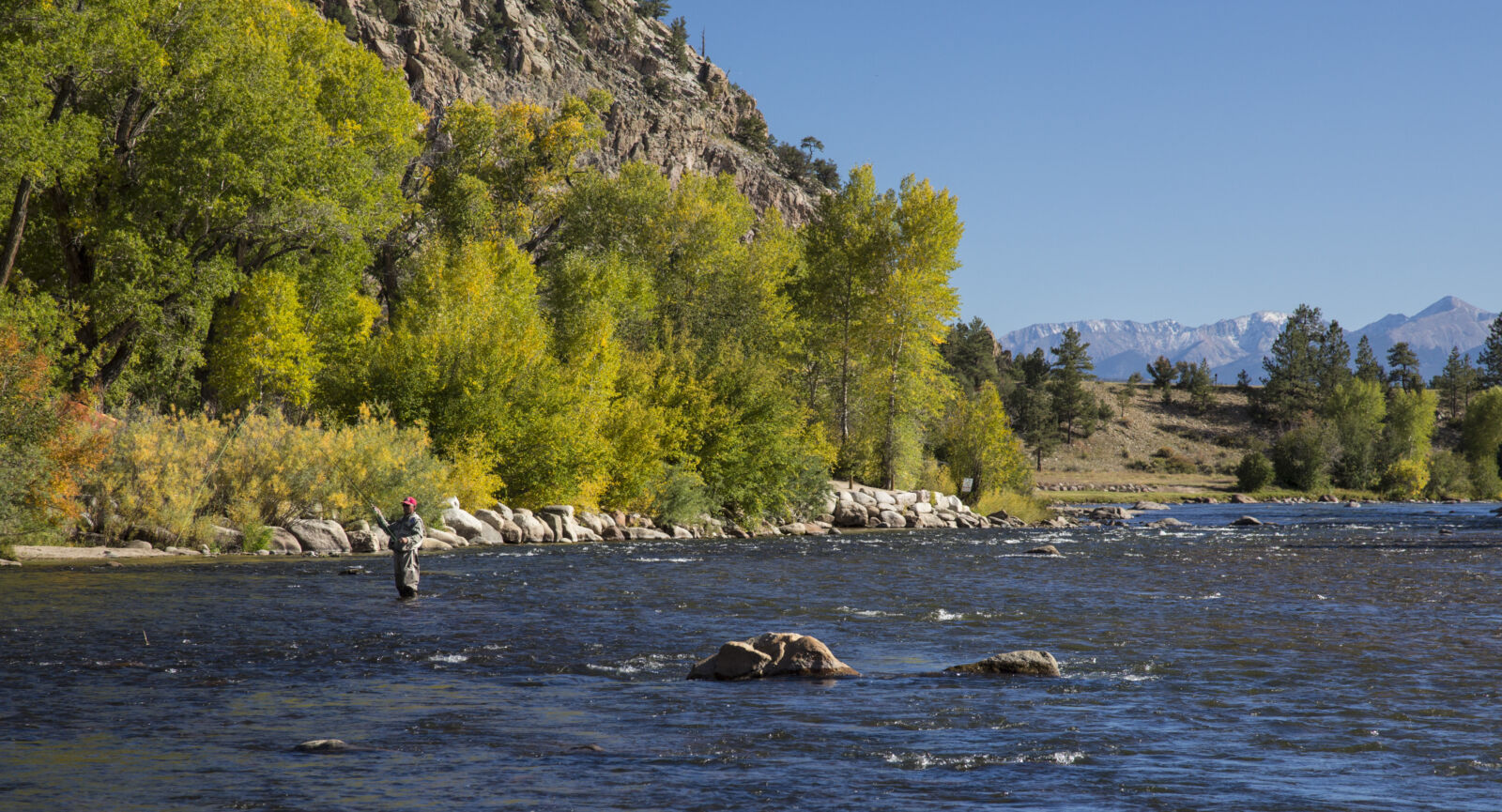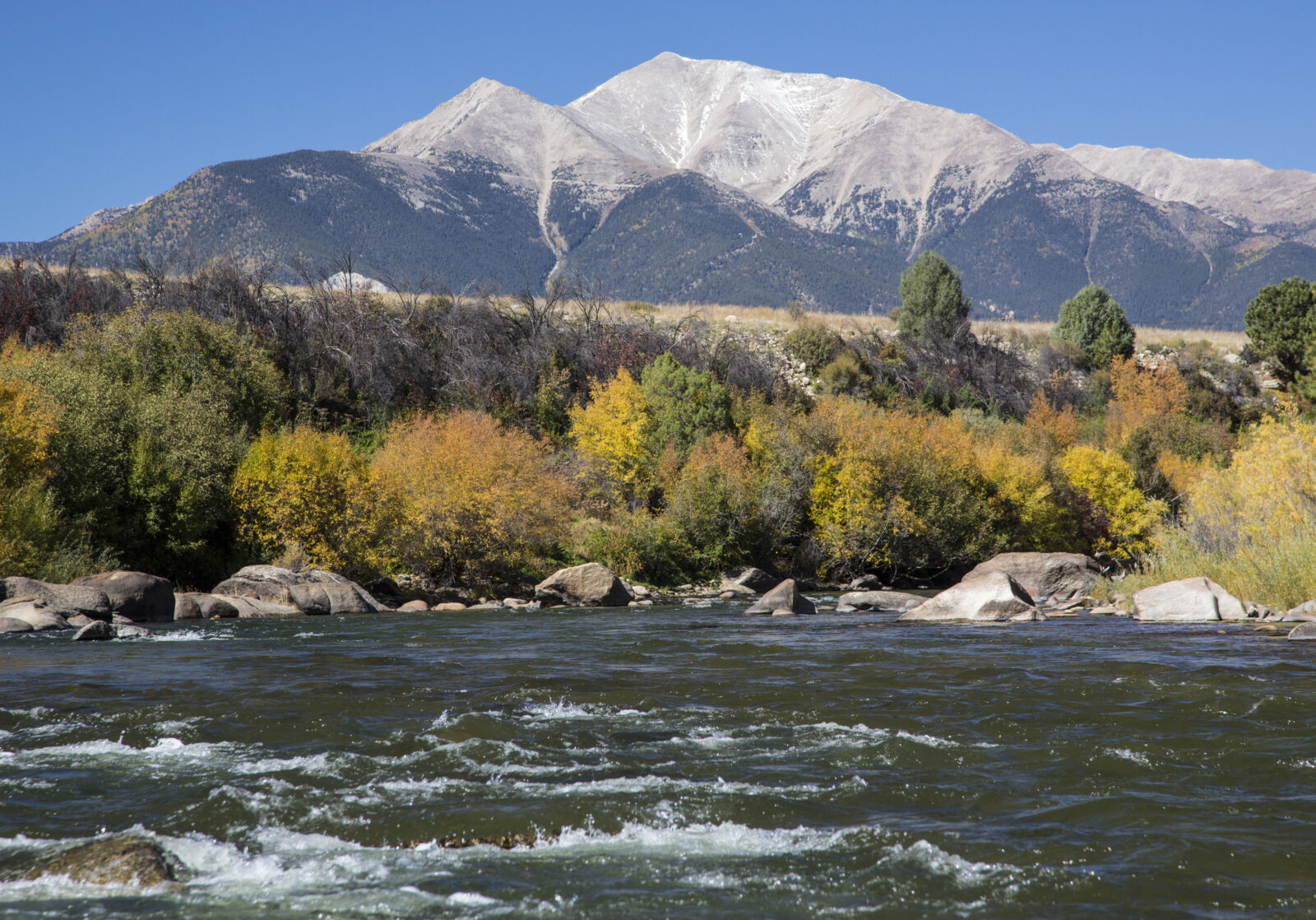Situated two and a half hours southwest of Denver, in the Arkansas River Valley, Browns Canyon is perhaps best known for its whitewater rafting and fly fishing opportunities. The landscape, however, holds so much more. Leaving the canyon’s class III-IV whitewater and hiking east, you pick your way through a dry pinon-juniper forest and maze of colorful rock outcroppings. As you climb higher, moving through Bureau of Land Management lands and onto the Pike-San Isabel National Forest, the rocky terrain gives way to ponderosa pine and mixed conifer forests, scattered with stands of aspen.

With little visitation outside of the river corridor, wildlife viewing opportunities abound. The area provides habitat for bighorn sheep, mule deer, elk, mountain lions, bobcats, black bears, coyotes, red and gray foxes, and pine martens. Golden eagles, bald eagles, hawks, and countless other birds frequent the canyon. The area also hides evidence of historic peoples that used the area over 10,000 years ago.

Browns Canyon, which sits less than five miles from my back door, has served as my family’s weekend playground since we moved to Salida, Colorado two years ago. Whether paddling the canyon during spring runoff, stalking trout in its cool waters during the summer, admiring the bright yellow aspen above the canyon in autumn, or soaking up the winter sun on a southwesterly facing rock outcropping in the winter, my family has developed an incredible appreciation for this special place. With this National Monument designation, the incredible value of this area has finally been recognized at the national level. Now, others will have the chance to enjoy this protected area forever into the future.
Click here to learn more about the Browns Canyon National Monument.

